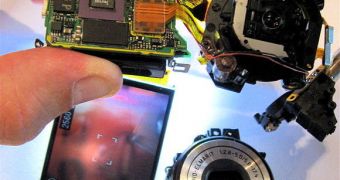Digital cameras have moved over the years from being something that only the rich could afford to being a tool of the masses. Prices for the average models can be afforded, and only the top-notch ones remain untouchable for the common people. But experts have been looking for a way to make even cheaper image sensors – the most expensive part of a camera – ever since the devices first appeared. Now, a group of scientists believes it may have found the solution – replacing the sensors with memory chips, but with their lids taken off, NewScientist reports.
The team, which is led by engineer Edoardo Charbon, from the Swiss Federal Polytechnic Institute (EPFL), in Lausanne, made its presentation this week, at an imaging conference, held in Kyoto, Japan. The creators of the new devices say that their “gigavision” may very well pave the way for a new generation of mobile-phone cameras, and other inexpensive devices that will offer much clearer and detailed pictures. Apparently, according to the team, the memory chips work well in both dim and bright light, which is, definitely, a plus.
Even expensive cameras still struggle with these two types of conditions, which are oftentimes a nightmare for photographers. EPFL team member Martin Vetterli says that memory chips have been known to respond to light for a long time. Once their lid is removed, the photons in light energize the electrons inside, destroying all the existing charges inside. “Light simply destroys the information,” the expert adds. The “extra something” the team managed to discover was that, if the light was properly channeled on the chip, then it could, in effect, store a digital image.
Additionally, the imaging memory chip requires no analog-to-digital conversion for the information it receives. It stores the data directly in their digital form, unlike early charge-coupled device (CCD) sensors, and modern complementary metal oxide semiconductor (CMOS) sensors. This means that the memory chip could be made 100 times smaller than a light sensor. “Our technology will always be two orders of magnitude smaller,” Vetterli says.

 14 DAY TRIAL //
14 DAY TRIAL //